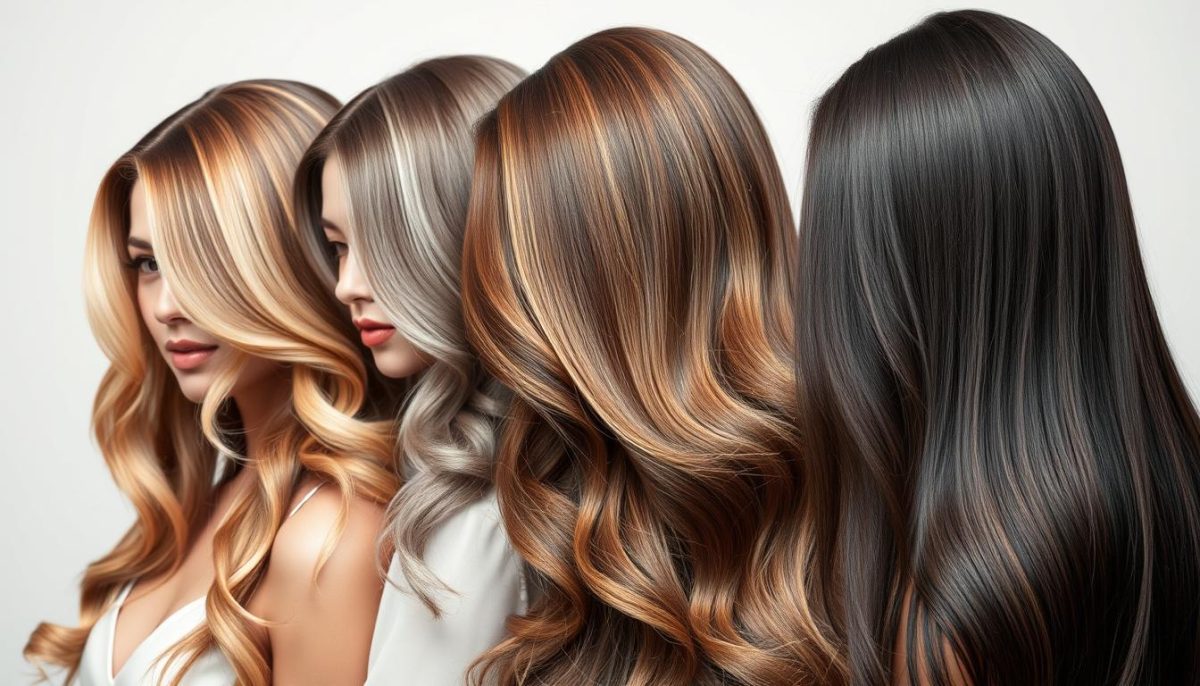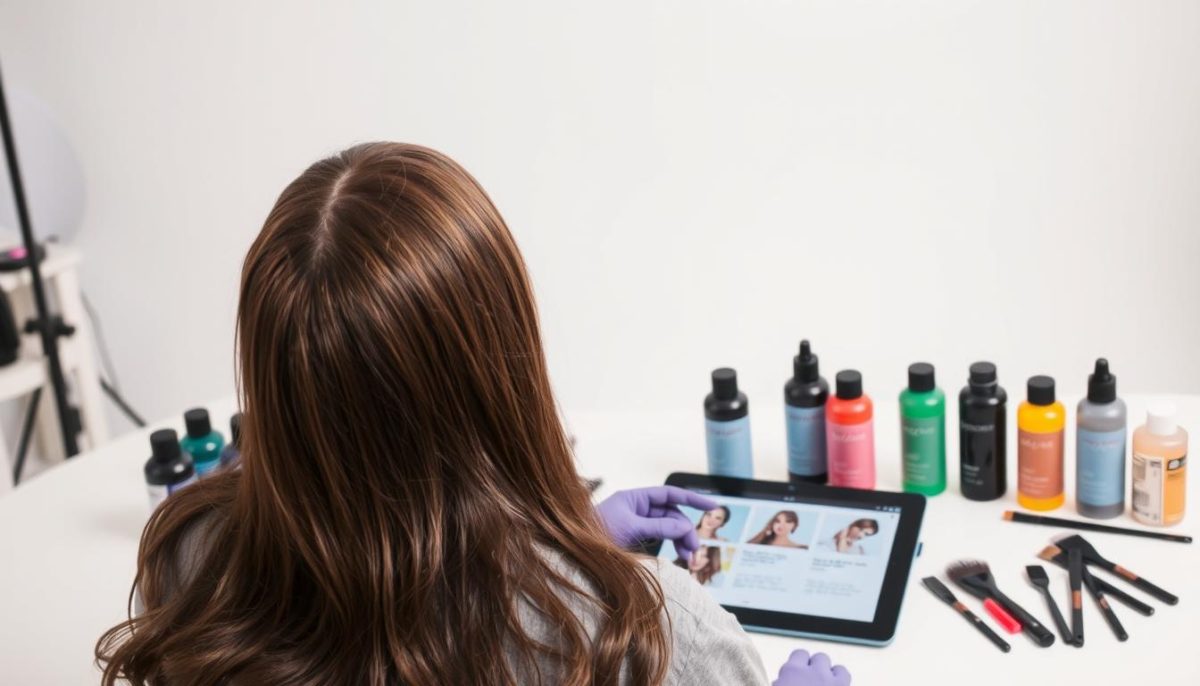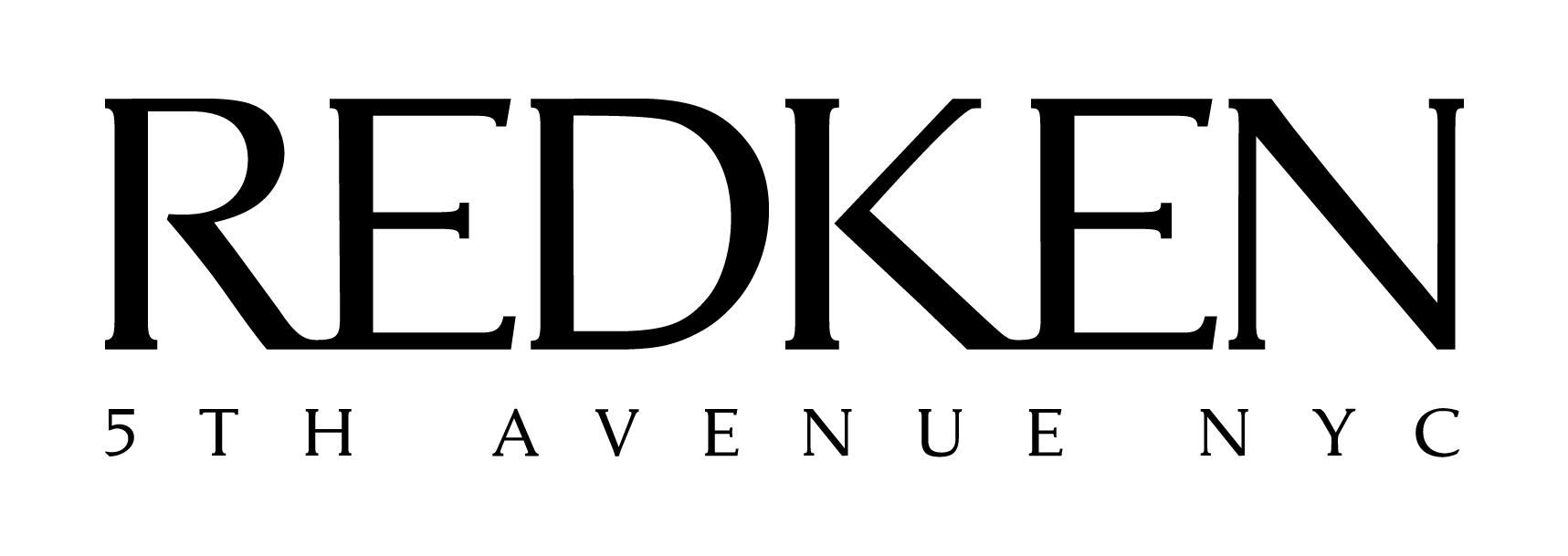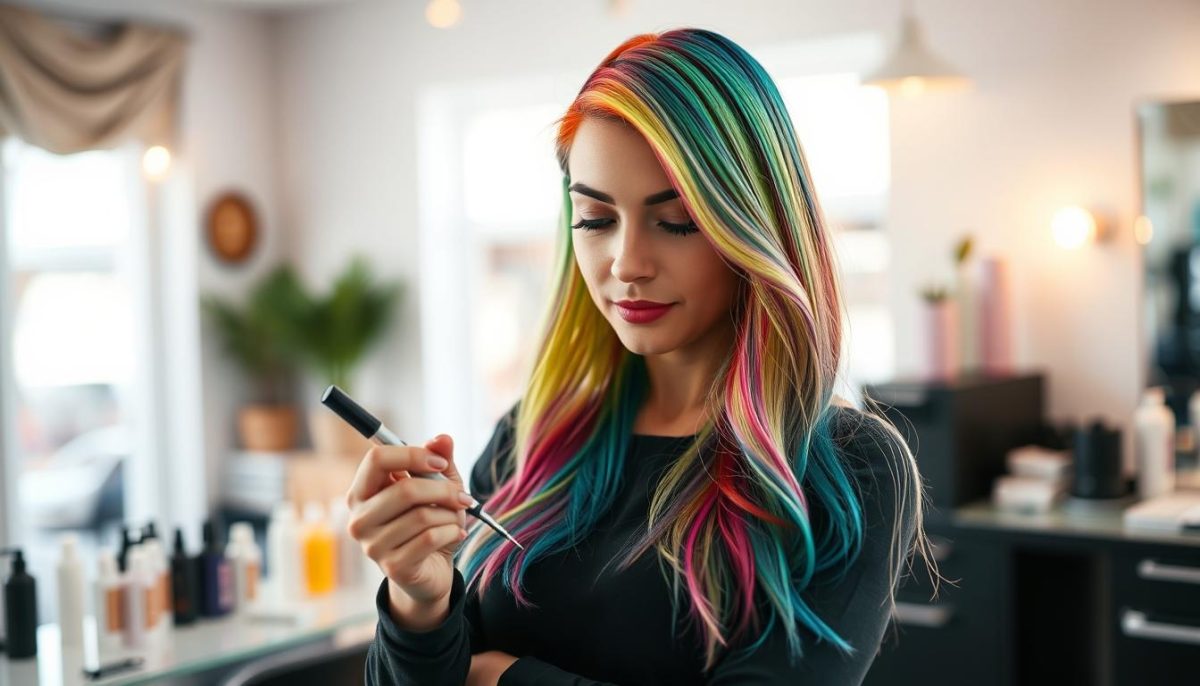Hair Colour
Everything you need to know about colouring your Hair
Welcome to our ultimate guide on colouring hair! Whether you’re pondering a minor tweak or a major overhaul, you’re in the right place. This article is packed with essential tips and insights on hair colouring. Navigating the world of hair dye can seem daunting, but we’ve got you covered. We’ll explore the variety of products available, impart professional techniques, and spotlight the latest trends. Following our guidance, you’ll not only achieve a stunning new look but also maintain your hair’s health and vitality. Let’s dive into this colourful adventure together!
Key Takeaways
- Understanding different types of hair dye can simplify your choices.
- Consider all factors before settling on a colour, including your skin tone.
- Exploring both temporary and permanent options allows for versatility.
- Caring for your hair post-colouring is vital for maintaining vibrancy.
- Trends vary seasonally, so stay updated for inspiration.
- DIY colouring can be rewarding with the right preparation and products.
Understanding Hair Colouring Basics
Hair colouring is widely embraced for altering our hair’s pigment with various products. It ranges from simple to complex, aimed at different looks. Grasping the fundamentals of hair dye is crucial. It guides our product selections and application techniques.
What is Hair Colouring?
Hair colouring transforms our natural hair hue using either chemical or natural methods. Options include temporary, semi-permanent, or permanent changes. Knowing the basics helps us navigate our choices effectively.
Why Do We Colour Our Hair?
People colour their hair for many reasons. Some seek to express individuality or creativity. Others aim to conceal greys or follow fashion trends. Regardless of the reason, changing our hair colour can be an exciting way to change our appearance.
Different Types of Hair Colour Products
Recognizing the array of hair colouring products is essential for desired results. Key types involve:
- Permanents: They promise enduring effects and need careful application.
- Demi-permanents: These are milder solutions that gradually disappear.
- Semi-permanents: Perfect for those wishing short-term changes without commitment.
Top brands like Wella, Redken, and L’Oreal Professional offer high-quality colouring solutions. They cater well to both beginners and pros.

Choosing the Right Hair Colour
Selecting the perfect hair colour is crucial to enhancing our look. It involves deciding between natural tones, which bring subtle elegance, and bold hues that convey our unique flair. Striking the right balance is both thrilling and complex.
Natural vs. Bold Colours
In the debate of natural versus bold colours, consider what suits your lifestyle and taste. Browns, blondes, and reds offer a timeless beauty, enhancing your natural features. Conversely, bright blues and vivid purples allow us to flaunt our inventiveness. It boils down to what boosts our confidence and makes us feel stunning.
Considering Skin Tone
Finding colours that complement our skin tone is key to a cohesive look. Shades vary with skin undertones; golden blondes and rich chestnuts suit warm tones, whereas ash and platinum excel on cool undertones. Knowing our skin’s base tone is essential in choosing the right hair colour.
Temporary vs. Permanent Dye
The choice between temporary and permanent dye hinges on our commitment level. Temporary colours provide a low-risk way to test new shades, fading after several washes. For long-lasting vibrancy, permanent dyes are the go-to, demanding serious consideration. A stylist’s advice can be invaluable for those pondering a major change.
Hair Colouring Techniques
Transforming our locks, the array of hair colouring techniques available can significantly impact our look. With so many methods at our disposal, it’s possible to select a style that truly reflects our personality and how much effort we’re willing to put into maintenance. Popular techniques include highlights, balayage, amongst others, each offering a unique way to express ourselves.
Highlights and Lowlights
Highlights and lowlights are key for adding depth and dimension. Highlights work by lightening sections of our hair. Conversely, lowlights introduce darker tones. Together, they create a striking contrast. This blend of shades can dramatically enhance our natural appearance, leading to a vibrant and dynamic hairstyle.
Balayage vs. Ombre
Balayage creates a natural, sun-kissed look through a technique of hand-painting colour onto the hair. This method offers a gentle transition between shades. In contrast, ombre presents a more pronounced gradation from darker roots to lighter ends. Both techniques allow us to uniquely express our personal style.
Global Colouring Techniques
Global colouring applies a single shade throughout the hair, making a bold statement. This method can produce a dramatic transformation, suitable for those seeking a major change. Whether aiming for understated elegance or a standout hue, global colouring meets various preferences. It remains a favoured choice for its striking results.

Preparing for a Hair Colouring Session
Before we dive into hair colouring, prioritising our hair’s health is critical. Effective prep is key to achieving great outcomes. Through exploring essential steps, we’re set for a successful session.
Assessing Hair Health
Starting with a thorough hair health check is crucial. We must look for damage, dryness, or brittle strands. Acknowledging these issues allows us to gauge if our hair can handle the colouring. Addressing any concerns with targeted treatments restores vitality, preparing our hair for the process.
Performing a Patch Test
The significance of a patch test is paramount. Doing this test 48 hours before colouring detects potential allergic reactions. It involves a simple application on a small skin area. This precautionary step is easy and enhances safety during colouring.
Gathering Necessary Supplies
Gathering all required supplies in advance is vital for a smooth colouring experience. Essentials include gloves, applicators, and a towel. For superior hair care products, consider brands like idHair and Redken.
DIY Hair Colouring: A Step-by-Step Guide
Starting your DIY hair colouring venture is electrifying and fulfilling. By adopting the correct strategies and employing appropriate tools, we can secure impressive outcomes at home. This guide will cover must-have products, offer application advice, and discuss the importance of post-dye hair care.
Products We Recommend
For a successful DIY hair colouring experience, high-quality products are essential. Brands like L’Oreal Professional and Wella are our top picks for they carry vibrant, durable colours. Picking a dye that matches our hair type improves results. It’s best to choose formulas that promote hair health and achieve your wanted shade.
Application Tips and Tricks
Adhering to stepwise at-home hair dye tips ensures salon-grade outcomes. Dividing the hair into sections makes application smoother. Start applying from the roots, moving towards the tips, to fully saturate each hair strand. Wearing gloves is crucial for hand protection, and keep a wet cloth nearby for quick clean-ups.
Aftercare for DIY Colour
Post-dye hair care after dye is vital for colour vibrancy and longevity. Opt for conditioners made for colour-treated hair to seal in moisture and enhance shine. Washing less frequently and using cool water for rinses safeguards your colour. Routine maintenance and hydrating treatments will keep your hair in prime condition over time.

Professional Hair Colouring: What to Expect
Opting for professional hair colouring can do more than just change your hair; it transforms your entire look. Knowing what to expect increases our confidence and enthusiasm towards the change. When contemplating this decision, it’s vital to think about several aspects. These include selecting the appropriate salon, understanding the consultation process, and considering the factors that affect pricing for hair colour.
Choosing the Right Salon
Selecting the right salon is critical for achieving the look you desire. Aim for a salon with skilled professionals, glowing reviews, and an inviting environment. Such factors ensure that our experience will be top-notch.
Consultation Process
The consultation gives us a chance to discuss our visions and preferences with the stylist. They’ll evaluate our hair and suggest techniques that suit our requirements, advising on upkeep too. This crucial step ensures that our expectations are in sync with the stylist’s capabilities. It guarantees a shared goal.
Understanding Pricing
The cost of hair colouring can vary widely. Elements like the salon’s location, the stylist’s level of experience, and the chosen techniques influence the price. Inquiring about costs during the consultation is strategic. It empowers us to make decisions that align with our finances and desired outcome.
Managing Hair Colour Maintenance
Maintaining vibrant hair colour calls for dedication in care. Establishing a care routine aids in keeping our hues brilliant. It allows our gorgeous colours to stand out. Here’s how to keep that colour looking fresh and protect it too.
When and How to Touch Up Colour
We should get touch-ups every 4-6 weeks for optimal results. This timing helps control root growth and colour integrity. Regular checks on our hair pinpoint areas needing care, keeping our appearance refined.
Recommended Products for Coloured Hair
To boost colour care, use products made for coloured hair. Opt for sulphate-free shampoos and conditioners to combat fading.
Protection Against Sun and Heat
It’s vital to shield coloured hair to keep it vibrant. Sun and heat styling greatly damage it. We should use:
- Leave-in conditioners with UV protection
- Heat protectants before styling
- Hats or scarves on sunny days
Common Hair Colouring Mistakes
Often, we encounter several common mistakes while colouring our hair, leading to less than ideal outcomes. Knowing these errors allows us to get the vibrant, desired effect without overprocessing or choosing the wrong colour.
Overprocessing Your Hair
Overprocessing is a major problem. It can cause dryness, brittleness, and a dull appearance. To avoid this, always stick to the dye’s instructions and think about your hair’s health before deciding how often to dye it.
Choosing the Wrong Shade
Choosing a dye far from our natural colour can look unnatural. To prevent this, we suggest staying within two shades of your current colour. This ensures a cohesive look while showcasing your individuality through your hair.
Neglecting Hair Care
Achieving the perfect colour often means we overlook ongoing hair care. Ignoring the right post-colour care can dull your new colour and damage your hair. Using quality products for coloured hair helps keep it vibrant and healthy.
Seasonal Hair Colouring Trends
As the seasons change, so do our hair colour preferences, mirroring the dynamic colours around us. Keeping up with seasonal hair trends rejuvenates our appearance regularly. Each season offers unique inspirations that dramatically alter how we look.
Popular Colour Choices for Summer
In the warmer months, we’re drawn to vibrant and playful hues. Options for summer include striking golden blondes, soft pastels, and bold neons that align with the season’s energy. Sun-kissed highlights introduce a beachy vibe, elevating our summer experiences.
Winter Colour Inspirations
With winter’s arrival, our colour choices deepen, echoing the season’s quiet beauty. We see a shift toward deep burgundies, rich chestnuts, and cool blacks. These shades not only warm our look but also maintain our chic elegance.
Spring and Autumn Looks
Transitioning between seasons, spring calls for pastel tones reminiscent of blooming floral landscapes. Soft pinks and lilacs breathe new life into our style. Conversely, autumn invites earthy shades like burnt orange and amber, channeling the essence of the falling foliage. Adopting these trends keeps our appearance vibrant and aligned with the natural world.
Addressing Hair Colouring Allergies
Hair colouring often blinds us to the risk of allergies. Knowing symptoms early changes how we plan our hair care. It’s important to know the signs and find safer dye options. This is essential for those worried about reactions to standard dyes.
Recognising Symptoms
Being aware of hair dye allergies is key, especially with new products. Watch for symptoms such as:
- Itching on the scalp or skin
- Redness around the application area
- Severe swelling that may extend beyond the dye region
If these signs appear, getting professional advice is crucial. It’s wise to be cautious with our health and hair treatments.
Safe Alternatives to Traditional Dyes
For those allergic, finding other options is crucial. Natural and hypoallergenic dyes help achieve the look we want safely. Brands like idHair and organic products cater to sensitive skin. They use less harsh chemicals, presenting a safer choice for many.
Colouring for Different Hair Types
The way we dye our hair greatly depends on our hair type. Every type possesses unique characteristics essential for optimal colouring results. To achieve a stunning and effective colour, it’s crucial to consider these differences. They influence the techniques and products we choose.
Straight Hair Considerations
Straight hair provides uniform results because of its smoothness. It absorbs dye evenly, simplifying the process of attaining the shade we want. We can apply dye knowing it will spread evenly. Nonetheless, it’s key to monitor how long the dye is left in, as straight hair might lighten more quickly than anticipated. A quality colour protectant ensures our hair remains vibrant and healthy.
Curly Hair Colouring Tips
Colouring curly hair brings unique challenges. The texture influences dye application, requiring careful attention. Preparing curly hair appropriately ensures the colour is applied evenly, preventing uneven tones. Adding a moisturising treatment prior to dyeing can boost dye uptake, yielding vivid results. To keep curls hydrated and defined after dyeing, it’s beneficial to use a leave-in conditioner.
Texture and Thickness Factors
The dyeing process heavily relies on understanding our hair’s texture and thickness. Thicker hair might need more dye and more time to process, whereas finer hair takes on colour faster. Evaluating our hair’s porosity is crucial for selecting the right methods and products for dazzling results. Experimenting allows us to find what suits our needs, leading to the most personalised and beautiful colour treatments.
Understanding Hair Colouring Myths
Many myths about hair colouring cause doubt and reluctance towards trying new shades. We come across many false beliefs about hair dye that impact our decision-making and self-esteem. Clarifying these myths helps us confidently pursue our unique styles.
Debunking Common Misconceptions
It’s a common belief that all hair dyes severely damage hair. In reality, many products now are made to be less harsh. Proper application techniques minimize potential damage. Whether you’re colouring at home or in a salon, selecting the right dye is crucial for hair health.
The Truth About Damage
Many people think colouring their hair will always harm it. It’s important to know that damage levels vary based on dye type and application. With good care, like using conditioning treatments and avoiding too much heat, vibrant hair colours can be enjoyed without harming hair quality.
Myths About Grey Coverage
There’s a false belief that only dark dyes cover grey hair effectively. Lighter shades can also offer a natural, subtle blend with greys. Trying different colours not only elevates our look but also challenges outdated views on grey hair coverage.
Conclusion: Embracing Our Colour Choices
Reflecting on our hair colour journey highlights the importance of hair colour in expressing ourselves and boosting confidence. Each colour choice reveals a part of our personality, making our hair a vibrant symbol of who we are. Experimenting with shades and techniques celebrates our uniqueness and the creativity colour adds to our lives.
Celebrating Individuality
The thrill of adopting new looks is a key part of the colouring experience. Choosing vibrant or subtle colours brings exhilaration. Embracing colour boosts our mood and helps us express our true selves, reflecting our feelings or goals. We should inspire each other to experiment with hair colour trends and find styles that speak to our identity.
Finding Joy in Our New Looks
Exploring hair colour is a journey of self-expression and discovery. Playing with different tones and shades enhances our looks and deepens self-understanding. Encouraging others to try new colours creates a supportive community, where expressing uniqueness is celebrated.
Encouraging Others to Explore Colour
In conclusion, celebrating our colour choices and inspiring others is vital. The hair colour world is vast, offering endless possibilities for us to explore together. Each new colour fosters confidence and joy, enriching our lives one strand at a time.
















